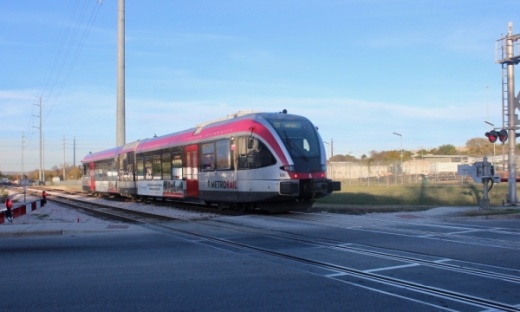That makes 16 consecutive months of increased ridership for Capital Metro, as reported by agency President and CEO Randy Clarke. The agency provided an estimated 2,586,083 trips in January, about 195,000 more than in January 2019.
“For 16 months in a row, more @CapMetroATX customers are choosing better, sustainable ways to get around,” Clarke tweeted Feb. 12.
The numbers released by Capital Metro are also broken down by mode and show the largest increase, aside from special events and the new Pickup service, is from MetroExpress, the commuter bus service that runs through Northwest Austin and Leander. That service saw a 24.3% year-over-year increase in ridership in January as compared to January 2019.Total #CapMetro ridership is again--more than 8% in Jan! For 16 months in a row, more @CapMetroATX customers are choosing better, sustainable ways to get around . Let's keep making positive choices as we look towards the future of #mobility in the #ATX. #ProjectConnect pic.twitter.com/eo59YxZ7IE
— Randy Clarke (@CapMetroCEO) February 12, 2020
Last month, ridership on MetroBus increased 7.92% to about 1.9 million rides, and MetroRapid bus ridership rose 8.17% to about 428,000, according to estimated January figures from Capital Metro.
On MetroRail, ridership declined 0.33% from December to January,, but Dave Dech, the agency’s vice president of rail operations, told Community Impact Newspaper that the monthly ridership of 60,907 still represents an increase from mid-2019.
Last year, the agency noted a significant drop in riders because of the closure of the downtown station in June for construction of its new permanent station adjacent to the Austin Convention Center. Train service stopped at Plaza Saltillo in East Austin and riders would then be bused into downtown.
“When we started the shuttle buses, we saw a 30% drop-off in our ridership,” Dech said. “When we opened the temporary station [in November], we saw the ridership numbers start to slowly come back.”
Dech said he expects ridership to continue increasing in 2020 after the agency resumed Saturday rail service in January and added two midday trips and an evening trip to the schedule.
“That late evening trip, the 7:17 departure—we have really seen that organically grow,” he said, adding the agency has seen about 5-10 new riders per week on that trip out of downtown Austin.
He said Capital Metro also does not have plans for any major service disruptions of MetroRail in 2020, although the agency continues to look into ways to further maximize MetroRail service within the new constraints of positive train control, a federally mandated safety system. PTC construction is expected to continue through the summer, according to Dech.
PTC safety systems do not allow trains to operate too close together. During peak periods, Dech said Capital Metro would operate trains eight minutes apart.
"Right now, they’re at 12 minutes apart,” he said. “That’s as close as we’re comfortable putting them.”





